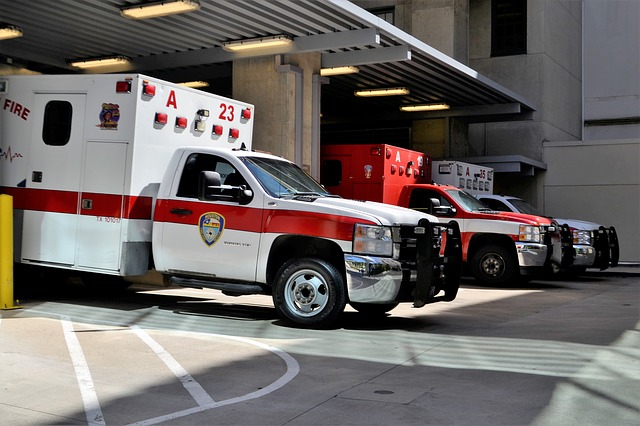Emergency transport, such as ambulances, can save lives–but not without a price. Although these services are solely run by the government in countries like the U.K., the situation is different in the U.S. — from private or public facilitators, whether the ride is covered by insurance, and more.
Here are some ideas on how to localize and report on emergency transportation services.
Emergency Medical Transportation: Private or Public?
Ambulances are regulated by the National Highway Traffic Safety Administration, and typically funded by the government’s emergency medical services triage of police, fire, and a separate EMS crew. Costs depend on health insurance (covered when “medically necessary”), or without it, location, miles, use of life support, or for an emergency or scheduled transport. Services also can be hospital-owned or private, such as with the company American Medical Response. Private services are criticized for higher rates and underpaying their EMTs. How is it in your area? Are there certain private emergency services?
Some patients are choosing to take ride services such as Lyft or Uber instead, as well as emergency services partnering with the companies. While people have relied on others such as friends and family before, some find that taking Lyft or Uber, particularly if the emergency doesn’t require immediate medical assistance, is cheaper than an ambulance; for instance, $20 versus $450-5,000. In addition, ambulances are required to take the patient to the nearest hospital, regardless if it’s covered by the patient’s insurance or its quality.
However, Lyft and Uber object, citing liability issues, particularly since the drivers are not medically-licensed professionals, according to a BuzzFeed News report. Drivers also fear being penalized for refusing the request or cancelling the ride.
Do people in your area, particularly Millennials or GenZs, choose to use ride services instead of traditional transportation? What were the circumstances? How much did they pay?
Hidden costs of emergency medical transportation
Once free for patients, ambulances are mostly run by private companies. They also charge by the mile and for “services,” including oxygen, even when they are not necessary or needed, according to a report by the Los Angeles Times. When it’s all over with, patients receive “surprise charges.” (This also occurs with air emergency services, as New York Times reported.)
There is advice to dispute these, including requesting an itemized bill and scanning for duplicate or inaccurate charges, or hiring a medical bill advocate. A medical bill advocate, unlike a patient advocate, steps in after the treatment is done and analyzes whether costs need to be negotiated, mainly through insurance.
NerdWallet recommends to start looking for one not just after receiving an eyebrow-raising bill, but if the patient goes to hospitals often or has a serious surgery planned. While they can be the patient’s relative, loved one, or part of a nonprofit, medical bill advocates can be hired on a professional basis through the National Association of Healthcare Advocacy Consultants or the Alliance of Claims Assistance Professionals.
Ask people about their insurance know-how, and if they’re prepared, as well as any hidden or inflated costs they’ve experienced while taking medical transportation. Has anyone hired a medical bill advocate?
Other factors to consider with medical transportation
Branch out on more than just ambulances. There is air transport (with 550,000 transports per year in the United States, according to The Association of Air Medical Services), as well as police motorcycles, Park Ranger vehicles, fire engines, and lifeguard vehicles. There are also civil service crews — tow truck, public utility, and locksmith — that clear up accidents from roadways or deal with specific equipment or utilities, such as gas and electricity.
How do emergency transportation services differ in natural or human-related disasters? In rural areas? During busy/peak hours of traffic? How about holidays or occasions such as sports games?
It might be worth investigating fatalities and injuries in your area and seeing how they compare to the national average. In the past 20 years, there was an average of 33 fatalities annually that involved an ambulance, including one-fourth taking place inside the vehicle during the crash, according to a 2015 report by ems.gov. Meanwhile, non-fatal injuries inside the ambulance make up 46%, with an average of 1,500 crashes per year. Crashes by state can be found through the National Traffic Safety Administration.
These services can also be a source of labor stories, such as comparing wages and potential disputes of EMT workers, starting at the Bureau of Labor Statistics.










